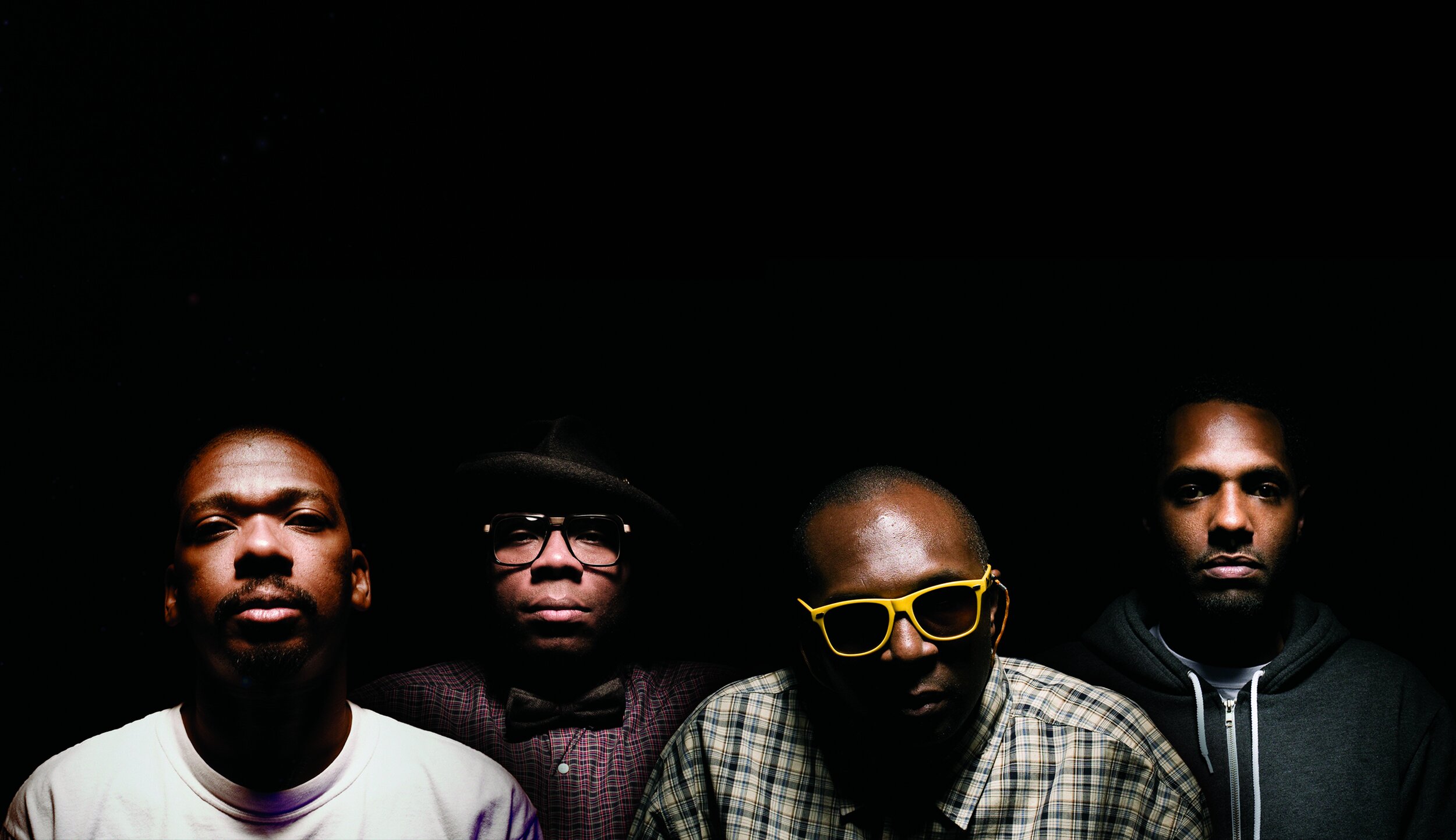Following a seven-year hiatus, the avant-garde New York rappers return with Fluorescent Black, an album that plunges deep into the group’s collective psyche.
When Anti-Pop Consortium broke up in 2002, its dissolution came on the heels of a critically acclaimed album, 2002’s Arrhythmia (Warp), hailed by many as a masterpiece in progressive hip-hop. Punctuated by stutter-step beats and unconventional rhyme schemes, the album cemented APC’s sound as a harbinger of rap’s future. But it may have been a future envisioned at a cost. Six months after the album’s release—and following a world tour with Radiohead and stateside run with DJ Shadow—the innovative quartet of Beans, M. Sayyid, Earl Blaize, and High Priest split, citing differing creative visions.
“Things happen,” Beans says. “Everyone chose to spread their wings for good or bad.” Following the break Beans emerged as a solo artist on Warp, showcasing his talents as an auteur; M. Sayyid and High Priest formed Airborne Audio, releasing 2005’s Good Fortune (Ninja Tune) and touring with Bright Eyes; and Earl Blaize immersed himself in production.
It wasn’t until 2007, when a mutual friend arranged an impromptu APC reunion at Beans’ birthday, that the seeds for Fluorescent Black—the group’s first album in seven years, and debut on Big Dada—were planted. Soon the foursome struck out on a brief European tour, testing out new material while dusting off its live show—all the while writing new music and further evolving the group’s signature sound. As High Priest recalls, hip-hop was still locked in a conservative mindset when Arrhythmia came out. Today though, he believes audiences have broadened their palette.
“You can’t ever really underestimate or overestimate what people are willing to accept,” Priest says. “Even with this most recent project, we find that people are gravitating to what might be considered the more extreme aspects of our production.”
Having handled the lionshare of production duties on Fluorescent Black, Priest is acutely aware of the legacy APC has to live up to. Especially now, as he and his longtime collaborators emerge from self-induced exile, and prepare for U.S. and European tour dates in support of the album’s October release, starting with a slot at the All Tomorrow’s Parties festival this September in New York.
“You need a new swagger for a new era,” Priest says. “ It’s good to be in this place now, going with the grain as opposed to, in the past, when it felt like we were going against it.”
This article originally appeared in Blurt magazine in April of 2009.
Photo by Timothy Saccenti.
